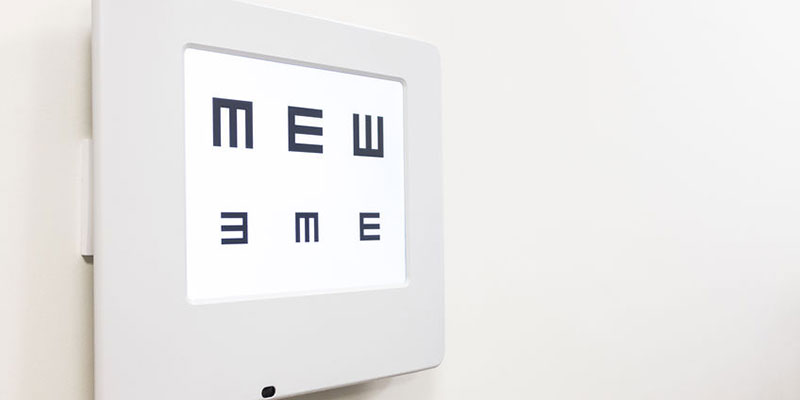For children ages three to five, our New Orleans optometrist will conduct a physical examination of your child’s eyes and also perform vision screenings with eye charts, pictures, letters, or the “Tumbling E” chart.
Seeing Your New Orleans Eye Doctor Early Can Help Ensure a Lifetime of Healthy Vision
Children need regular eye examinations, beginning at an early age. At Eyes on Canal, we recommend that a child’s vision be checked before the age of one, and then again at ages three and five. After they start school, children and adolescents should receive an annual exam.
Here are some facts about childhood eye conditions from the Centers for Disease Control and Prevention (CDC):
- About seven percent of U.S. children have a diagnosed eye or vision condition, and nearly three percent of those are considered blind or visually impaired.
- The most common vision disorders among children are refractive errors such as myopia, hyperopia, and astigmatism.
- Up to 28 percent of children ages 5-17 have astigmatism.
- Lazy eye (amblyopia) affects about two percent of 6- to 72-month-old children and is the most common cause of vision loss.
- Four percent of babies 6 to 72 months and nine percent of children ages 5 to 17 are nearsighted.
Early detection and intervention can ensure healthy vision that lasts a lifetime. Parents’ commitment to establishing healthy eye care habits teaches children to prioritize their health, including their eye health.
Preparing for Your Child’s First Eye Exam
If your child is old enough to understand, sit them down and explain what will happen during the appointment. Always be honest and try to calm any fears that they might have — e.g., mention that the doctor may put drops in their eyes that won’t hurt but might sting for a few seconds.
A child’s first eye examination will commonly include a medical history review, eye health evaluation, a discussion with your optometrist regarding the findings, and a detailed treatment plan, if necessary. The optometrist will likely check for the following childhood vision problems:
- Nearsightedness — can see things up close but objects far away are blurry.
- Farsightedness — can see things far away but things close up are blurry.
- Astigmatism — the eye isn’t shaped the way it should be so everything looks somewhat blurry.
- Amblyopia — one eye is weaker than the other because the brain area for that eye didn’t fully develop.
The doctor will also review how your child’s eyes move, whether they are lined up correctly, and how they react to changes in light.
For children ages three to five, the optometrist will conduct a physical examination of your child’s eyes and also perform vision screenings with eye charts, pictures, letters, or the “Tumbling E” chart, which measures how well a child who cannot read yet sees the form and detail of objects (visual acuity).
Schoolchildren should receive an eye examination annually from an experienced optometrist. School vision screenings or those done by a primary care physician are limited and cannot be relied on to provide the same results as a comprehensive eye exam. The optometrists at Eyes on Canal have the specialized training and equipment to make a definitive diagnosis and prescribe treatment for your child, if necessary.
Our office is family-friendly and welcomes children of all ages. If your child is ready for a visit to the optometrist or needs treatment for a suspected vision problem, schedule an appointment to discuss your issues with our caring team.
